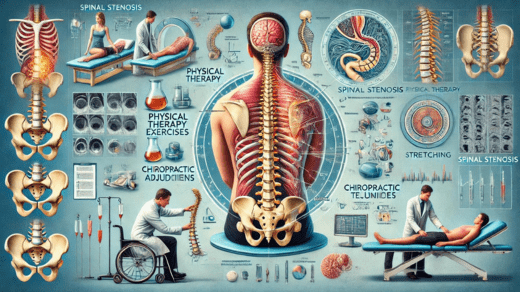The lifestyle changes are inviting a lot of challenges in our lives. There are numerous health issues like lower back pain, neck pain, sciatica and also Spinal Stenosis. All of these issues are painful and may hinder your day-to-day life.
Spinal Stenosis is one of the most common issues observed in millions of people worldwide. There are numerous causes behind Spinal Stenosis, but there are treatment options available to treat it and relieve the pain. Here is everything you should know about Spinal Stenosis causes, symptoms and treatment options.
What is Spinal Stenosis?
Spinal Stenosis is a condition in which the spinal vertebrae puts pressure on the spinal cord and nerves. This happens due to age-related wear and tear but causes severe pain in the neck to lower back region. This can trigger sciatica and crippling pain if not treated well.
What are the Causes of Stenosis of Spine?
There are numerous reasons behind Stenosis. Here are a few common and uncommon causes of this health condition.
- Age-Related Wear and Tear – Due to age-related wear and tear, the spinal discs put pressure on the spinal cord and cause Stenosis.
- Bone Spurs—Bone spurs caused by arthritis can cause Stenosis of the spine, as they put pressure on the cord and nerves.
- Herniated Disc – The soft cushion disc between the vertebrae sometimes slips out of place and causes Stenosis.
- Spinal Injuries – Any trauma to the spine can trigger Stenosis. People who’ve been in an accident usually face spinal Stenosis or other health conditions.
What are the Symptoms of Spinal Stenosis?
It’s important to identify the symptoms to avoid further health issues and treat them promptly. Here are some common symptoms that indicate spinal Stenosis.
- Chronic Neck Pain
- Chronic Back Pain
- Tingling Sensation in Shoulders, Arms and Extremities
- Loss of Bowel and Bladder Movement
- Radiating Pain from Buttocks to the Feet
- Severe Pain while Standing for a prolonged period
- Pain in the Abdomen and Loss of appetite
- Overall weakness in the body
These are a few common symptoms that indicate the onset of spinal Stenosis. Depending on the severity of the pain, doctors follow the appropriate treatment method.
Spinal Stenosis Treatment
Thanks to the advancing medical world, there are numerous Spinal Stenosis treatment options available. The most common treatment option is to undergo physiotherapy treatment. The physiotherapy involves numerous exercises for stretching, reducing the inflammation and reducing the pain.
For people facing severe pain, surgical options are available. The doctors will perform the necessary diagnostics procedures like X-ray, CT Scan or MRI. Depending on the diagnosis, they opt for the appropriate treatment option. At ANSSI Wellness, the doctors perform the 100% non-surgical Spinal decompression therapy to treat the SPinal Stenosis and other ailments. Thousands of patients have been benefitted from this therapy.




